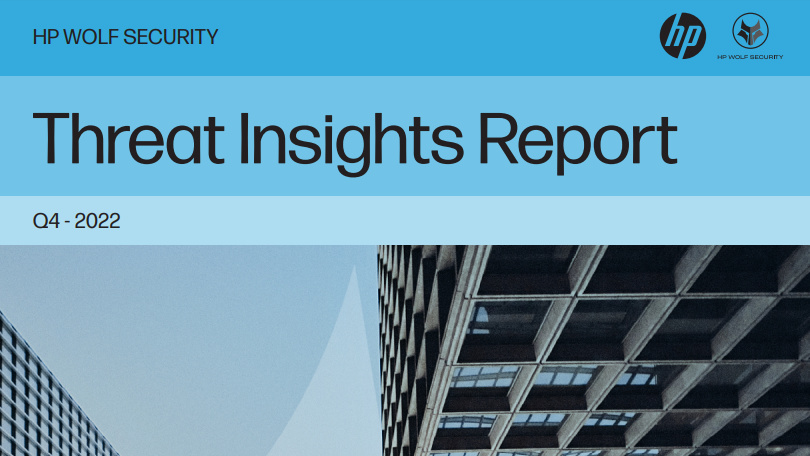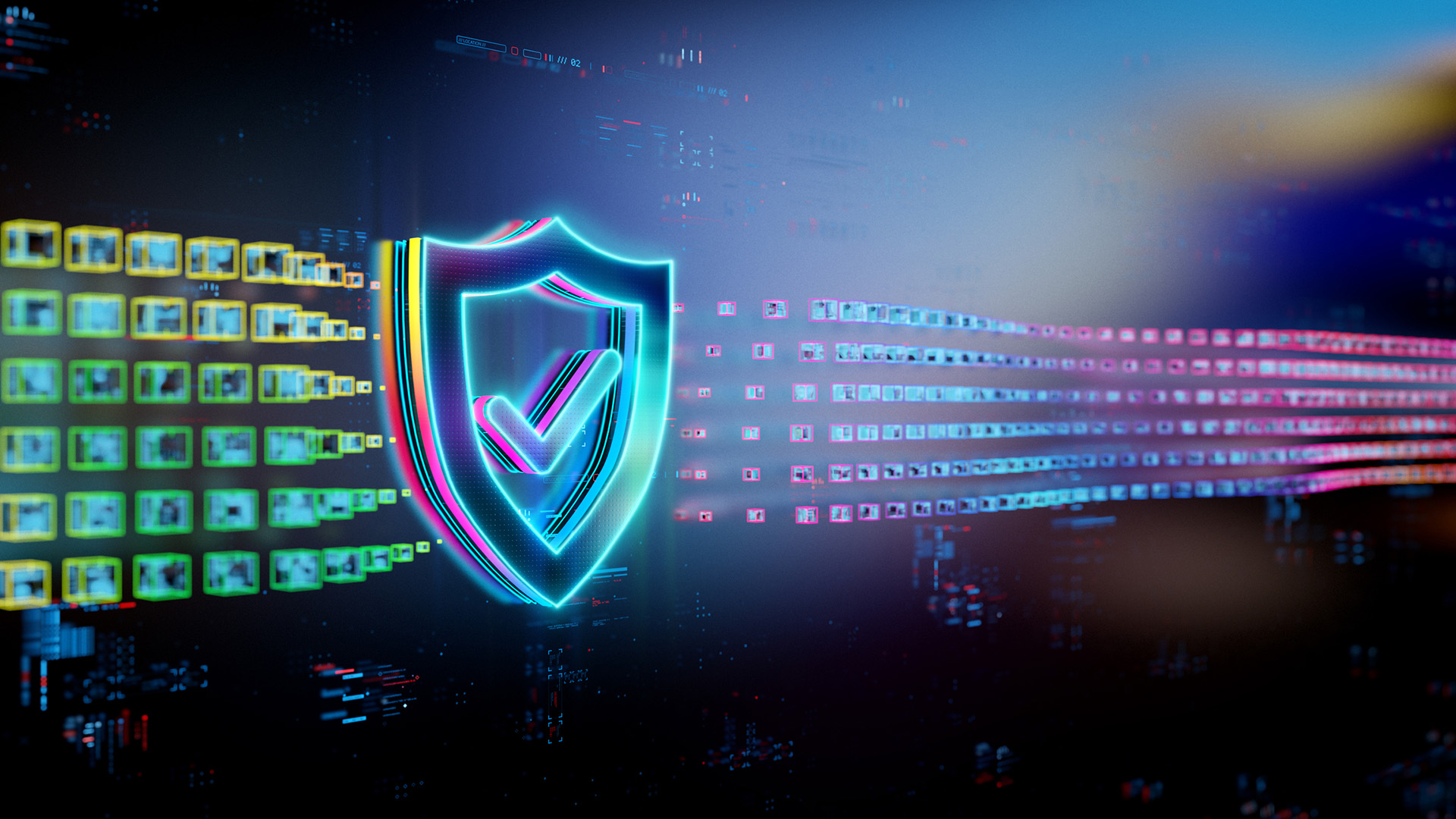How the channel can help secure the future of work
Hybrid work security issues pose challenges for businesses, but this is where the channel has an opportunity to step in and support partners


The UK is leading the charge for normalizing hybrid work, with the ONS finding employees are almost as likely to spend all, or part of their time at home (44%) as fully in the office (56%) week-to-week.
When managed correctly, hybrid work can enhance work-life balance, employee satisfaction, and productivity. But there are cyber security implications that come with these new working patterns.

Neil MacDonald is the UK & Ireland Channel Director at HP. He handles the go-to-market strategy and sales performance of HP’s print, personal systems, services and solutions in the UK and Ireland.
As part of this role, he also looks after the commercial, consumer and distribution sales teams – as well as relationships with the vendor’s channel partners.
This is where hybrid working has begun to create new opportunities for the channel, with research showing most UK organizations with a hybrid work model have gaps in their security posture. In short, new ways of working have made secure, remote management at scale more complex, yet even more essential.
You can’t protect what you can’t see
There was a time when security was simpler. A “castle-and-moat” approach focused on protecting all users inside a largely static network perimeter, and with relatively few staff working outside the office.
Today’s distributed cloud and mobile-enabled workplace is very different, blurring the perimeter and expanding the corporate attack surface. Hybrid working has also made the endpoint the center of the modern business, and in turn, the focus for threat activity.
If the endpoint is where business happens today, it’s also where cyber risk is most acute. Security leaders say the endpoint is the source of most security threats and where the most business-damaging risk is concentrated. A large part of the challenge for IT teams is visibility.
You can’t protect what you can’t see. But the shift to hybrid work came with an explosion in unmanaged endpoints – from home PCs and printers to remote laptops, smartphones, and tablets.
ChannelPro Newsletter
Stay up to date with the latest Channel industry news and analysis with our twice-weekly newsletter
RELATED RESOURCE

Threat insights report
Equipping security teams with the knowledge to combat emerging threats
Threat actors know that the endpoint has become more important than ever, which is why they’re bombarding users with phishing and malware. Many security leaders also believe that compromise of hybrid employees is their biggest security weakness, with phishing, ransomware, and attacks against unsecured home networks their top concerns.
Today’s security is a complex blend of moving parts. Not only do security teams have to manage digital threats via malicious emails, apps, and websites, they must also contend with more prosaic risks.
Using devices outside of the office means it’s more likely they might be lost or stolen, for example. The volume of employee and customer personally identifiable information (PII) and sensitive corporate data that could be accessed via these devices makes misplacing them a critical enterprise cyber risk.
Adding value through education and leadership
Most security leaders admit that protecting their hybrid workers will get harder in the year ahead, with many businesses raising budgets as a result.
That’s great news, but securing funding is only half the battle. It’s critical that organizations invest in the right tools. This is where the channel has a huge opportunity to add value through education and leadership.
The nuanced nature of cyber risk in the more fluid, distributed hybrid workplace means it’s not always easy to know where spending should be focused. If threats are also getting harder to spot, this gives even more reason to double down on prevention, with hardware-enforced features in, above and below the OS.
Application isolation is one such mechanism. It enables users to execute risky tasks like opening an email attachment or visiting an untrusted website in a micro-virtual machine (VM).
This VM contains the threat, ensuring it can’t spread, and eliminates it completely when the micro-VM is discarded. Similar technology can be deployed to isolate browser sessions from threats, so that any info-stealing malware already on an endpoint can’t grab credentials or sensitive data.
Isolation technology makes sense at a time when so much work happens outside the traditional protection of the on-premises corporate network. It’s why many security leaders see application isolation being key to protecting hybrid workers.
But security leaders and their channel partners need to go further still, to guard against the threat of lost and stolen devices.
Differentiating on endpoint protection
Hybrid work increased the risk of devices going missing. And while the cloud has solved some remote management headaches, it can’t deal with devices that are powered down or offline.
The good news is new technology that can allow IT to connect to devices in this state, enabling them to find, lock and/or erase such devices to mitigate cyber risk. That’s the extra layer of protection that organizations need on top of firmware and BIOS security, browser isolation and micro-VMs.
More importantly, it could provide channel players with an opportunity to build their own managed security services for laptop and fleet management – increasing margins on PC sales.
MSPs would not only be able to differentiate on this new remote management capability for desktop-as-a-service (DaaS) but also lower the cost of delivery by enhancing asset management and reducing the volume of high-cost trouble tickets.
Security services are an increasingly important mechanism for IT teams to do more with less – especially those in smaller businesses. In the context of increased spending on hybrid workplace security and remote management, they also offer channel partners a chance to shine.

Neil MacDonald is the UK & Ireland Channel Director at HP. He handles the go-to-market strategy and sales performance of HP’s print, personal systems, services and solutions in the UK and Ireland. As part of this role, he also looks after the commercial, consumer and distribution sales teams – as well as relationships with the vendor’s channel partners. Neil has wide experience across both the channel and at HP, holding various roles across personal systems and print – previously working as the director of e-commerce and omnichannel in EMEA.
-
 The UK government wants quantum technology out of the lab and in the hands of enterprises
The UK government wants quantum technology out of the lab and in the hands of enterprisesNews The UK government has unveiled plans to invest £121 million in quantum computing projects in an effort to drive real-world applications and adoption rates.
By Emma Woollacott Published
-
 Netgear WBE710 review
Netgear WBE710 reviewReviews The compact WBE710 delivers great cloud management features and a good turn of Wi-Fi 7 speed – but it does have a premium price tag
By Dave Mitchell Published
-
 Strategies for guarding against emerging cyber risks and invisible threats
Strategies for guarding against emerging cyber risks and invisible threatsIndustry Insights Attacks are evolving at a rapid pace, here are the key areas where the channel can help businesses bolster their defenses for the year ahead
By Mick Paisley Published
-
 The role of cyber security in the UK’s tech renaissance
The role of cyber security in the UK’s tech renaissanceIndustry Insights As the UK aims to be a tech superpower by 2030, robust cyber security is crucial to protect against increasing threats to emerging technologies and critical infrastructure
By Gavin Mee Published
-
 Consolidate to simplify application security: Why this is a business imperative
Consolidate to simplify application security: Why this is a business imperativeIndustry Insight New research shows 70% of organizations struggle with complex, disjointed security testing solutions - fragmentation leads to wasted resources, inefficiency and elevated risk levels.
By Jason Schmitt Published
-
 Why businesses should embrace the zero trust networking trend
Why businesses should embrace the zero trust networking trendIndustry Insight Cyber attacks are on the rise and VPNs no longer constitute robust network security - zero trust network access (ZTNA) offers a modern, achievable security solution for businesses of all sizes
By Chris McKie Published
-
 From complexity to clarity: The channel opportunity in streamlining cyber security
From complexity to clarity: The channel opportunity in streamlining cyber securityIndustry Insight Upcoming legislation and a rapidly evolving threat landscape means organizations can't afford to lose track of security transformation plans - and the channel can play a key role in bolstering defenses
By Scott Walker Published
-
 Bad bots: The security challenge catching the channel’s attention
Bad bots: The security challenge catching the channel’s attentionIndustry Insight High profile attacks in recent months present an opportunity for the channel to support clients and bolster security
By Teague Dufresne Published
-
 How the channel can best support SMB security goals
How the channel can best support SMB security goalsIndustry Insight Channel partners can play a vital role in bridging SMB security gaps
By Dr Darren Williams Published
-
 Why MSPs should focus their attention on data protection services, not backup
Why MSPs should focus their attention on data protection services, not backupIndustry Insight Accommodating for unique customer needs should be a key focus for channel partners
By Eric Harless Published